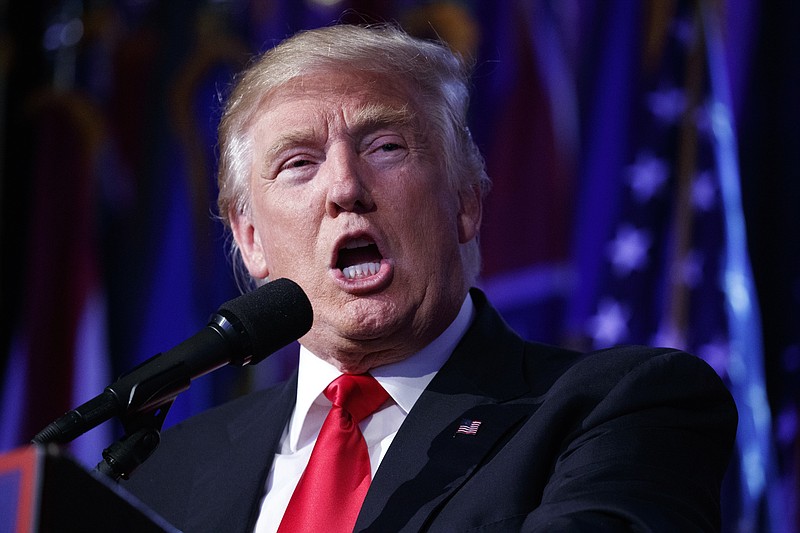Over the past few decades, party loyalty has been the defining feature of national politics. Especially in the House but even in the Senate, members deferred to their party leaders. Congress as a whole deferred to the presidency. Members of the president's own party acted as his foot soldiers. Members of the other party acted as his opposition.
But Donald Trump's victory smashes all that. He is hostile to the Republican establishment. His proposals cut across orthodox partisan lines.
As Bill Kristol told me, the coming Congress may not look like the recent Congresses, when party-line voting was the rule. A vote on an infrastructure bill may look very different from a vote on health care or education or foreign policy. This may be a Congress with many caucuses - floating coalitions rather than just follow-the-leader obedience.
What's about to happen in Washington may be a little like the end of the Cold War - bipolarity gives way to multipolarity. A system dominated by two party-line powers gives way to a system with a lot of different power centers. Instead of just R's and D's, there will be a Trump-dominated populist nationalism, a more libertarian Freedom Caucus, a Bernie Sanders/Elizabeth Warren progressive caucus, a Chuck Schumer/Nancy Pelosi Democratic old guard.
The most important caucus formation will be in the ideological center. There's a lot of room between the alt-right and the alt-left, between Trumpian authoritarianism and Sanders socialism.
Until now, people in that space have been slow to create donor networks, slow to form think tanks, slow to build coalitions of moderate legislators. But suddenly there's a flurry of activity between the extremes.
For example, Bill Kristol and Bill Galston have worked in the White Houses of different parties and had voted for the opposite presidential candidates in every election for four decades. But Donald Trump has reminded them how much they agree on the fundamentals.
The two Bills have now issued a joint statement calling for "a New Center." It's a defense of the basic institutions and practices of our constitutional order. It's an attempt to learn from the election results and craft a governing philosophy that people of different parties can rally around.
That's in the realm of ideas. In the realm of organization, there's also a flurry of activity. David Burstein's group, Run for America, is recruiting a new generation of political candidates.
The most active centrist organization, No Labels, began six years ago in opposition to polarized, cutthroat politics. The problem with the group back then was that there was no future to a political movement whose first name is "No." You have to be for something.
But under the leadership of its undeterrable co-founder, Nancy Jacobson, No Labels has evolved. It created a package of reform ideas to make Congress and the executive branch work together. It created an active congressional caucus, called the Problem Solvers Caucus, which now has 80 members, divided roughly evenly between both parties.
Going forward, moderates face four big challenges. First, deepen a positive national vision that is not merely a positioning between left and right. Second, elevate a new generation of political leaders so the movement is not just a retread of retired establishment types.
Third, build a mass movement of actual voters, not just financiers and think-tank johnnies. Fourth, have the courage to stand together as a swing legislative caucus, when the pressure from the party leaderships becomes intense.
It's an uphill climb, but this is a fertile moment. The Trump/Sanders era is going to create new opposition blocs, filled with people who never thought they would be working together.
There is a raging need for a movement that embraces economic dynamism, global engagement and social support - that is part Milton Friedman on economic policy, Ronald Reagan on foreign policy and Franklin Roosevelt on welfare policy.
The new center will probably start as a legislative caucus with members of both parties. Where it goes from there is anybody's guess.
The New York Times
